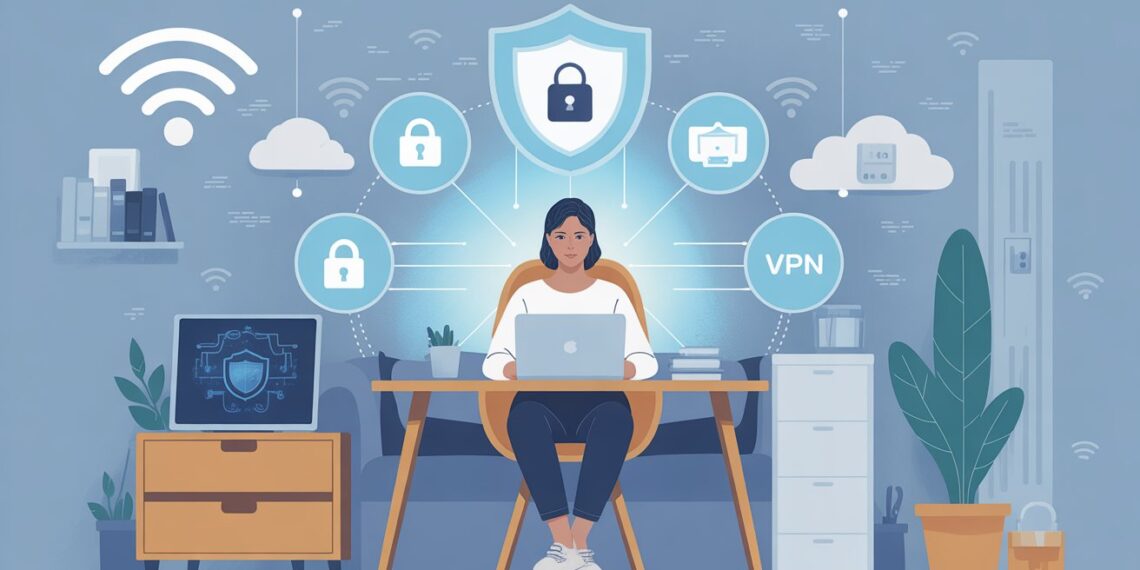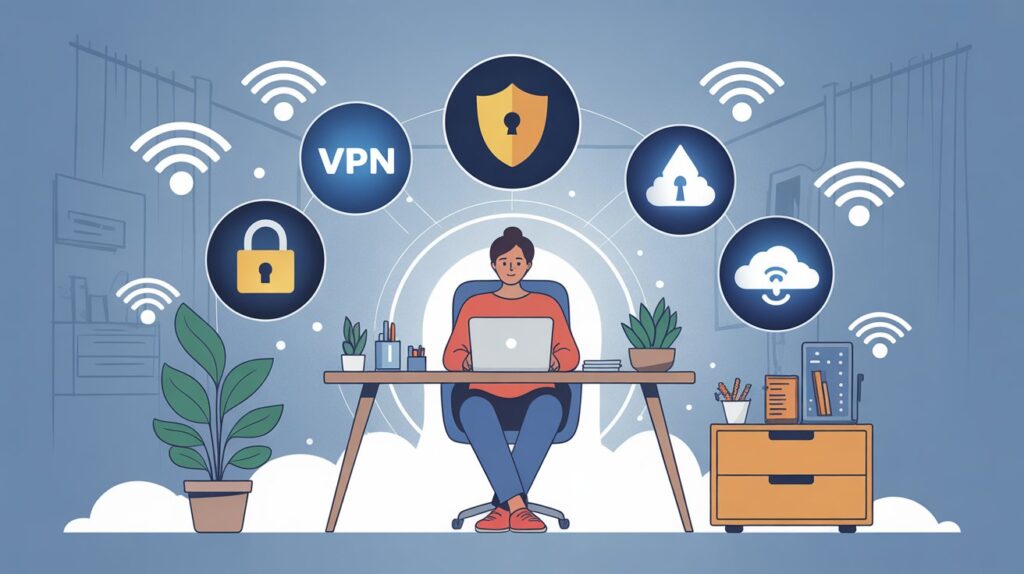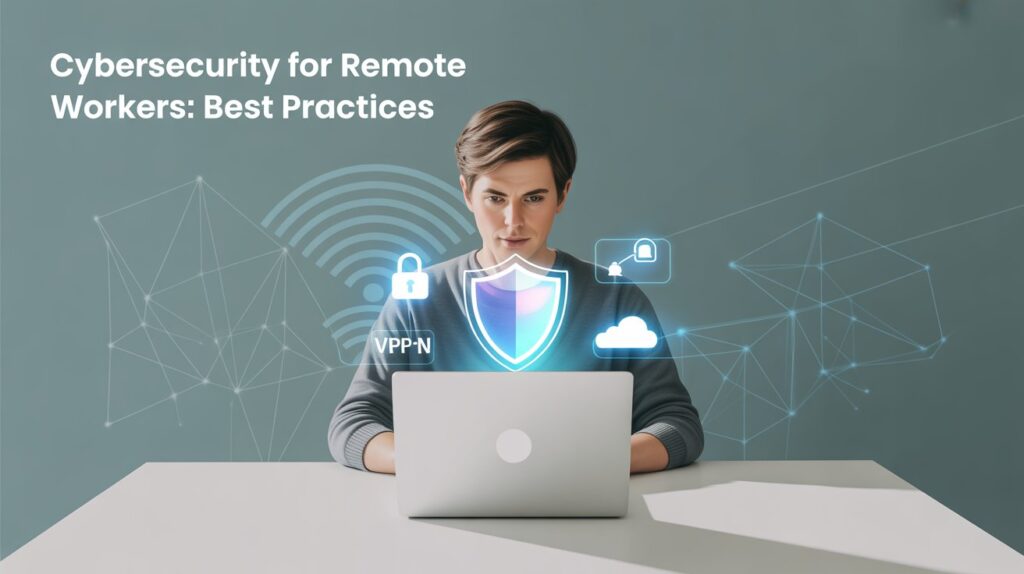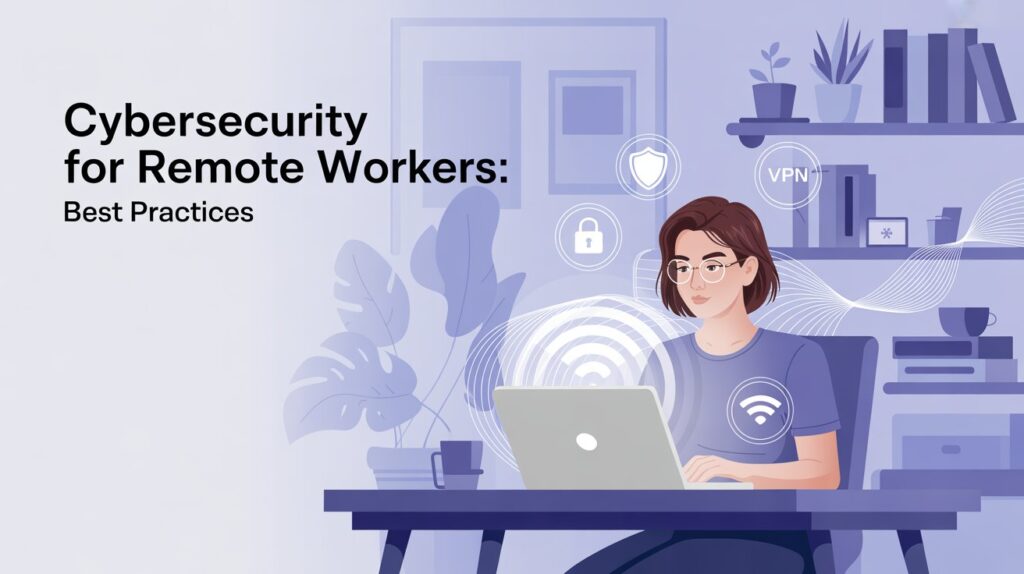Remote work has transformed from a temporary solution into a permanent fixture of the modern workplace. With this shift, businesses and individuals face heightened cybersecurity challenges. Cybercriminals actively exploit the vulnerabilities of distributed workforces, making it critical to adopt a proactive approach to digital security. Protecting sensitive data, safeguarding devices, and maintaining secure communication practices are now essential responsibilities for remote professionals and their employers.
This guide offers a comprehensive exploration of Cybersecurity for Remote Workers: Best Practices, equipping you with actionable strategies to stay safe while working from anywhere. Throughout this article, you will find practical advice, deeper explanations, and examples to help you understand not just what to do, but also why these measures matter.
Understanding Cybersecurity Risks in Remote Work
The rise of remote work has changed the traditional office perimeter. Instead of centralized IT teams controlling access within secured office environments, employees are now working across cities, countries, and even continents. This creates a vast and complex security landscape.
Common Threats Remote Workers Face
- Phishing and Spear Phishing: Malicious emails designed to trick employees into disclosing sensitive data or clicking infected links. Attackers tailor spear-phishing to appear personal, increasing the likelihood of success.
- Unsecured Wi-Fi: Public networks, such as those in airports or cafes, are notoriously vulnerable. Hackers can intercept data or create fake hotspots to lure victims.
- Weak Passwords: Studies reveal that many users still reuse simple passwords across multiple accounts. This significantly increases risk, as one compromised credential can unlock access to multiple platforms.
- Device Theft: Remote workers often carry laptops, tablets, and smartphones outside secured offices. If stolen, these devices can become gateways into sensitive corporate systems.
- Outdated Software: Unpatched applications and operating systems leave security holes that attackers exploit quickly.
- Social Engineering: Beyond technology, criminals often manipulate people directly—using fake calls, impersonation, or fabricated urgency to trick workers into bypassing security procedures.
Why Remote Workers Are Prime Targets
Remote workers blend personal and professional activities on the same devices, often lack enterprise-grade firewalls, and rely on home networks that may not meet business security standards. This weaker defense perimeter attracts cybercriminals seeking quick wins.
Securing Devices and Operating Systems
Regular Updates
Operating systems and applications are constantly updated to fix vulnerabilities. Failing to update creates unnecessary risks.
- Enable automatic updates for both OS and apps.
- Prioritize updates for browsers, productivity tools, and communication software.
- Do not postpone update notifications; a delay of even a few days can expose devices to attacks.
Antivirus and Endpoint Protection
A solid antivirus suite detects and neutralizes malware in real time.
- Install reputable antivirus software with frequent database updates.
- Companies with distributed teams should invest in endpoint detection and response (EDR) platforms to monitor devices remotely.
Encryption
Encryption protects sensitive data even if a device is stolen.
- Enable full-disk encryption (BitLocker for Windows, FileVault for macOS).
- Encrypt sensitive folders and files individually for additional protection.
Automatic Locking
Devices should never remain open to unauthorized access.
- Configure auto-lock within minutes of inactivity.
- Use strong PINs, passphrases, or biometric security like fingerprint or facial recognition.
Network Security for Remote Work
Home Wi-Fi Best Practices
Most employees underestimate the importance of securing home routers.
- Replace default admin credentials with strong, unique passwords.
- Enable WPA3 encryption; if unavailable, WPA2 is acceptable but less secure.
- Regularly update router firmware to patch vulnerabilities.
- Create a separate network exclusively for work devices to isolate them from personal gadgets.
Virtual Private Networks (VPNs)
VPNs ensure that internet traffic is encrypted, making interception far harder.
- Organizations should provide enterprise-grade VPNs with centralized management.
- Avoid free VPN services, as many log user data or inject ads.
- Choose VPNs that use advanced protocols like WireGuard or OpenVPN.
Public Wi-Fi Alternatives
Remote professionals frequently work while traveling.
- Prefer mobile hotspots or tethering from smartphones.
- If public Wi-Fi is unavoidable, ensure VPN is always active.
Identity and Access Management
Strong Password Habits
Passwords remain a frontline defense.
- Avoid dictionary words or simple sequences.
- Use long passphrases combined with uppercase letters, numbers, and symbols.
- Store credentials in a password manager for easy management.
Multi-Factor Authentication (MFA)
MFA reduces the risk of credential theft.
- Enable MFA on all accounts with access to sensitive data.
- Use authentication apps like Google Authenticator or Microsoft Authenticator instead of SMS codes.
Least Privilege Access
Not all employees require access to all systems.
- Companies should implement strict role-based access controls.
- Review permissions regularly to revoke unnecessary privileges.
Secure Communication and Collaboration
Messaging Platforms
Communication tools must prioritize security.
- Choose platforms with end-to-end encryption.
- Avoid mixing personal and professional accounts to reduce risk.
Video Conferencing Safety
Video meetings became a cornerstone of remote work, but they carry risks.
- Protect each meeting with a unique password.
- Limit screen-sharing rights to hosts or presenters.
- Use waiting rooms to screen participants before admitting them.
- Lock meetings once all attendees are present.
Email Hygiene
Emails remain the most common attack vector.
- Always verify the sender before clicking links.
- Hover over URLs to preview destinations.
- Report suspicious emails immediately.
Protecting and Managing Data
Cloud Storage
Cloud platforms make collaboration easier, but they must be secured.
- Store work files only on authorized cloud services.
- Apply granular access permissions to ensure only the right people view or edit documents.
- Enable two-factor authentication on cloud accounts.
Backup Strategy
Data loss can occur from cyberattacks or hardware failures.
- Schedule automated daily backups for peace of mind.
- Maintain both local encrypted backups and cloud backups.
- Test recovery procedures regularly to ensure backups function as intended.
Data Encryption
- Use TLS to protect data in transit.
- Encrypt sensitive files before sharing externally.
Physical Security for Remote Workers
Remote workers often overlook physical threats.
- Lock devices when leaving workspaces, even at home.
- Use privacy screens in public areas to block shoulder-surfing.
- Avoid openly discussing sensitive company matters in public locations.
- Use inconspicuous laptop bags to avoid drawing attention.
Building a Security-First Culture
Training and Awareness
Employees are often the weakest link in cybersecurity.
- Provide regular cybersecurity training tailored for remote environments.
- Simulate phishing attacks to build resilience.
Sustaining Vigilance
Security awareness tends to fade without reinforcement.
- Use periodic refreshers to keep knowledge current.
- Gamified training modules help maintain engagement.
Reporting Without Fear
Workers should feel empowered to report suspicious incidents.
- Build a no-blame culture where quick reporting is rewarded.
- Clear communication channels should exist for incident reporting.
Incident Response Preparedness
Reporting Protocols
A clear response plan is essential.
- Define step-by-step instructions for employees to follow after an incident.
- Provide multiple contact options for IT teams.
Response to Breaches
Swift action limits damage.
- Disconnect compromised devices from the internet.
- Follow organizational wipe-and-recovery procedures.
- Document incidents for post-mortem analysis.
Compliance and Regulations
Remote workers must understand regulatory obligations.
- Train employees on GDPR, HIPAA, or industry-specific frameworks.
- Non-compliance can result in financial penalties and reputational damage.
Tools Every Remote Worker Should Consider
Recommended Categories
- Password Managers: Bitwarden, 1Password.
- VPN Services: Cisco AnyConnect, NordVPN Teams.
- Endpoint Security: CrowdStrike, Symantec.
- Backup Solutions: Backblaze, Acronis.
Cost-Effective Options
Freelancers and small businesses often operate with limited budgets.
- Explore open-source security tools.
- Use free antivirus versions from reputable vendors when enterprise tools aren’t affordable.
Regional Considerations in Cybersecurity
Developing Regions
Budgets and infrastructure constraints require tailored solutions.
- Favor lightweight, resource-efficient tools.
- Train employees to recognize offline threats, such as device theft.
Low-Bandwidth Areas
Heavy security software can slow devices.
- Choose tools optimized for minimal bandwidth usage.
- Enable offline password managers for areas with unstable internet.
Industry-Specific Rules
Certain industries face stricter compliance requirements.
- Healthcare must prioritize HIPAA compliance.
- Financial services require strict adherence to PCI DSS.
Quick Security Checklist
- Keep all devices updated.
- Install antivirus and enable firewalls.
- Encrypt sensitive data and storage drives.
- Secure home Wi-Fi with strong credentials.
- Always use a VPN for remote work.
- Avoid unsecured public Wi-Fi.
- Use strong, unique passwords stored in a manager.
- Enable MFA on all accounts.
- Rely on encrypted collaboration platforms.
- Perform daily backups.
- Lock devices in public spaces.
- Stay vigilant against phishing attempts.
- Follow incident response protocols.
- Stay compliant with laws and regulations.
Frequently Asked Questions (FAQs)
Q1: What is the single most effective cybersecurity measure for remote workers?
Multi-Factor Authentication (MFA). Even if a password is compromised, MFA ensures that unauthorized users cannot access accounts without a second verification factor.
Q2: How can I secure my home Wi-Fi for work?
Change the default router credentials, enable WPA3 or WPA2 encryption, keep router firmware up to date, and create a separate network for work-only devices.
Q3: Do freelancers need the same cybersecurity practices as employees of large organizations?
Yes. Freelancers often handle sensitive client data, so using VPNs, strong passwords, encryption, and regular backups is just as critical for them.
Q4: How can employers support their remote workforce in staying secure?
Employers should provide essential tools like VPNs and password managers, enforce clear security policies, and conduct ongoing training to build awareness.
Q5: What should I do immediately after detecting a suspected cyber incident?
Disconnect the affected device from the internet, inform your IT or security team, reset account passwords, and follow your company’s incident response procedures.
Conclusion
Cybersecurity in remote work is no longer a choice—it is a necessity. Remote employees face unique risks ranging from phishing attempts and data theft to unsecured public Wi-Fi and outdated software. The good news is that by following proven strategies—such as enabling strong authentication, keeping systems updated, encrypting communications, and maintaining regular backups—these risks can be significantly reduced.
By embracing Cybersecurity for Remote Workers: Best Practices, organizations and individuals alike can create a safer, more resilient digital environment. The goal is not only to protect sensitive information but also to build trust, ensure productivity, and strengthen long-term resilience in an increasingly digital-first world.












